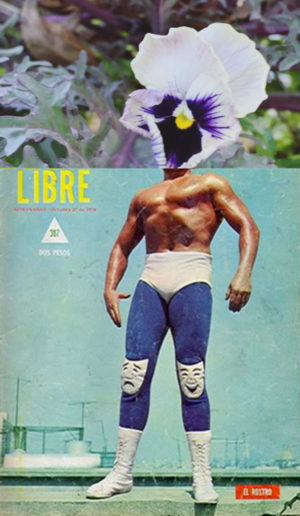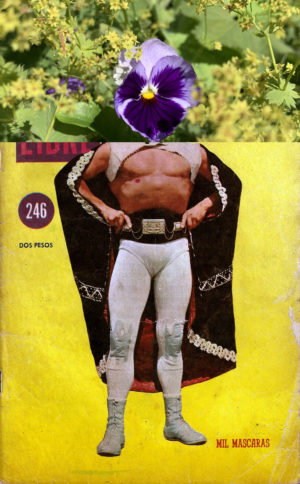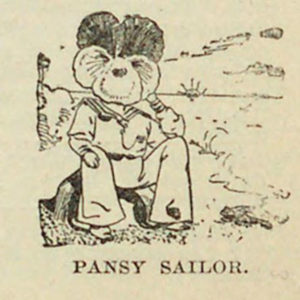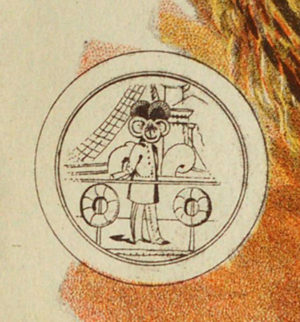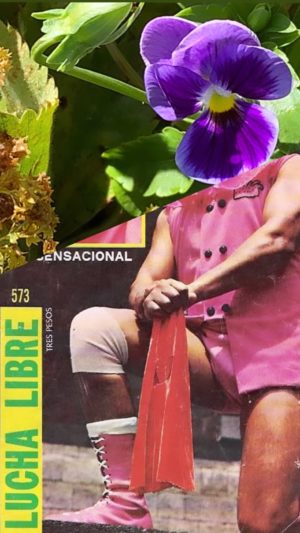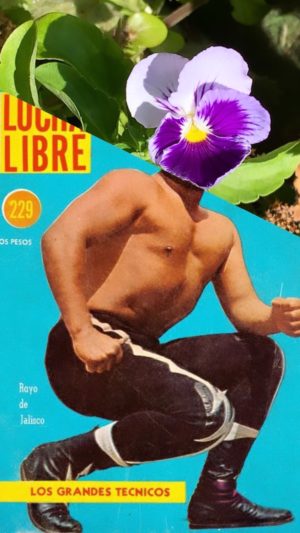In my latest newsletter: a bouquet of thoughts about spring.
Dandelions and orchids
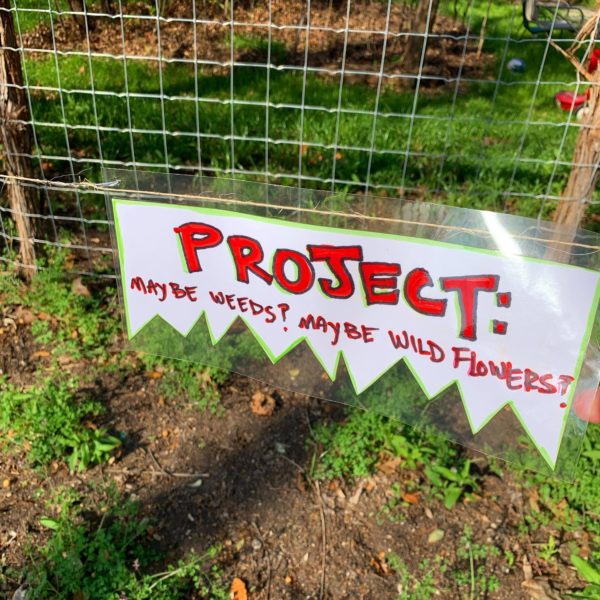
Here’s a wonderful sign I saw in a front yard while walking my neighborhood. This is exactly how I feel when I’m tossing out seeds at the beginning of a creative project: Are these weeds or are they flowers? I guess we’ll see.
But what is a weed? Emerson, ever a fan of a gardening metaphor, said it was “a plant whose virtues have not yet been discovered.”
I came across another gardening metaphor just this morning: dandelions and orchids.
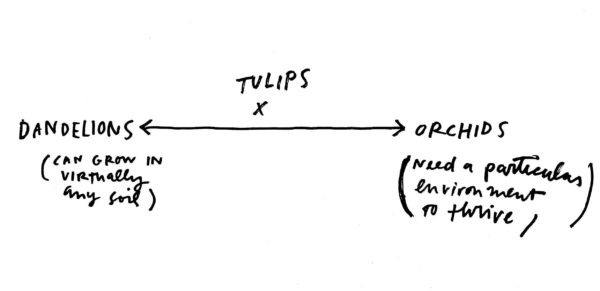
This metaphor comes from psychology and has to do with sensitivity in children. The idea is that some children are like dandelions and they can grow in any environment. Other children are like orchids: they need very particular conditions and the right environment to grow and thrive. And a majority of children are like tulips, somewhere in the middle of these two extremes.
The metaphor, like all metaphors, has limits, but I find it personally helpful: I’m raising one boy who’s more like a dandelion and one who’s more like an orchid.
Artists tend to be highly sensitive people, and I wonder how many grown artists consider themselves dandelions or orchids.
I feel like a dandelion, myself, which is good and bad. So often, I feel scattered to the winds, content to land wherever, and do my work there. I am easily distracted and can get interested in anything. Chaos can be a very fruitful source of creativity for me.
But there are orchid parts of me that I feel are really beautiful and often neglected — in part because I pride myself on my unfussy dandelion-ness.
I suspect this has some relationship to the specialist/farmer and generalist/hunter tension.
Return of the pansies
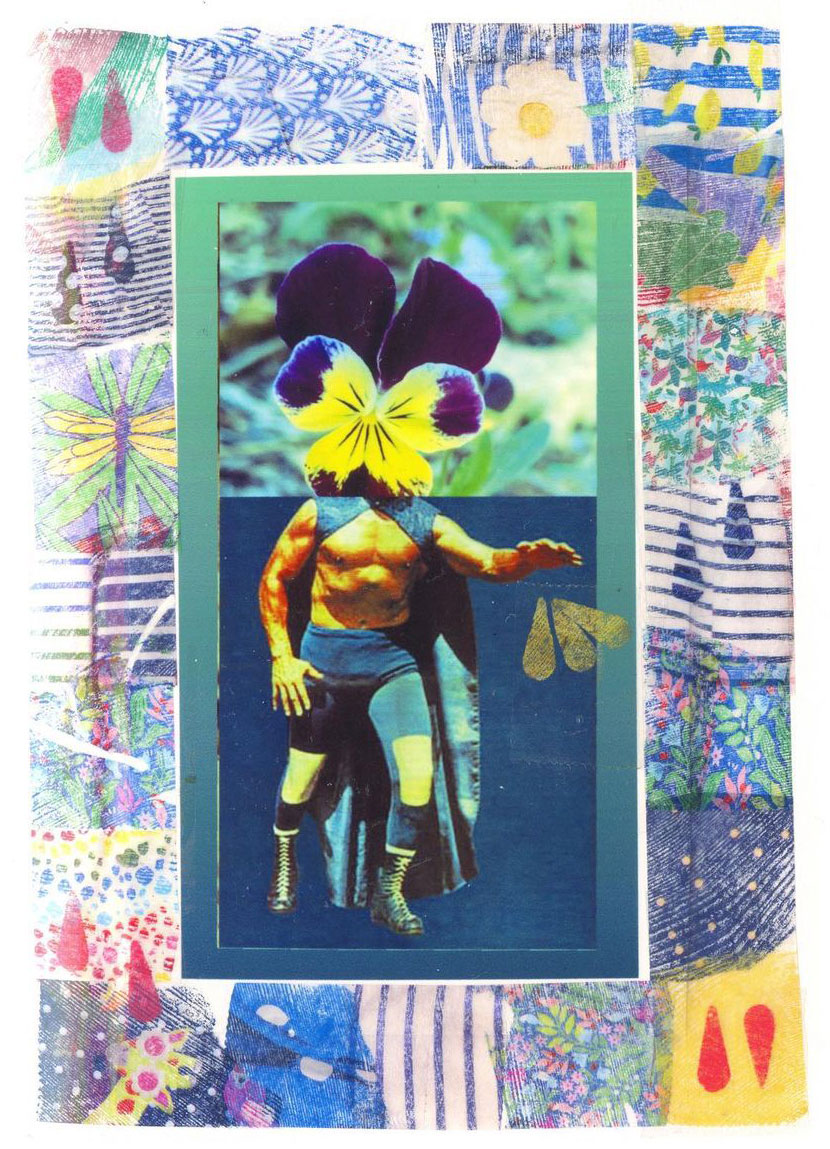
My friend Manjula Martin (author of Scratch: Writers, Money, and the Art of Making a Living) posted a pansy from her backyard that was so good I had to resurrect my dormant Pansy Luchadores project!
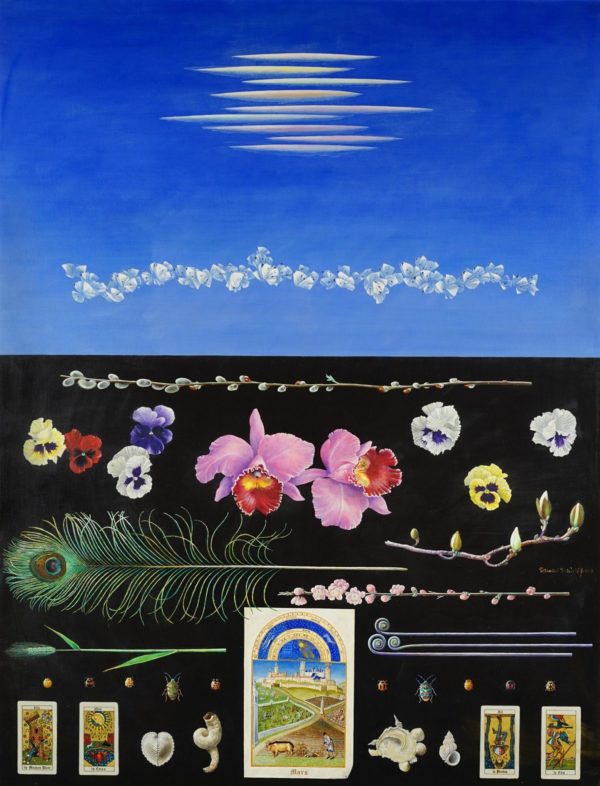
I’m become a little bit of a pansy nut and have taken to collecting (saving images to my hard drive) artwork featuring the flowers. I recently came across this wonderful painting by Tateishi Tetsuomi, who was described this way in a documentary synopsis:
Tateishi Tetsuomi was born in Taiwan in 1905. He returned to his birthplace to find painting subjects and then he had been attracted by the landscape and local cultures of Taiwan. During his stay in Taiwan, he made oil paints, illustrations and wood engravings for the magazine Minzoku Taiwan (Taiwanese Folklore).
He was regarded as a promising painter, but his achievements were to be forgotten when he was repatriated to Japan at the end of WWII and lost most of his paintings. He earned a living as an illustrator for children’s books, but finally achieved unique expressions in his last years.
And our recent neighborhood walks have yielded sights like this, so stay tuned for more:

Pansy precursors
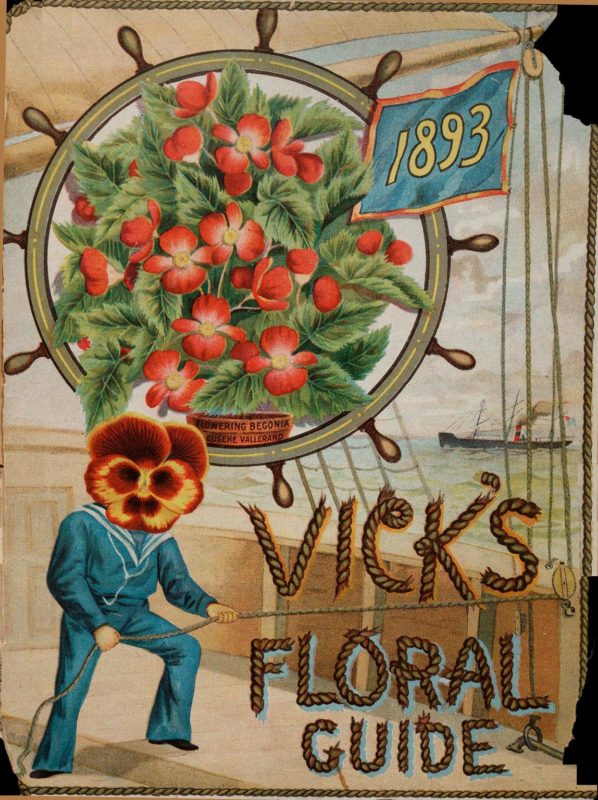
A reader sent me this amazing find: a special “Poet’s Number” of Vick’s Floral Guide from 1893, which not only contains quotations from famous writers about flowers and gardening, but also this family of “Pansy Sailors” which show up throughout the pages. Certainly, they are ancestors of my Pansy Luchadores!
I can’t find any real explanation for them or any evidence that they were used in other Vick’s guides.

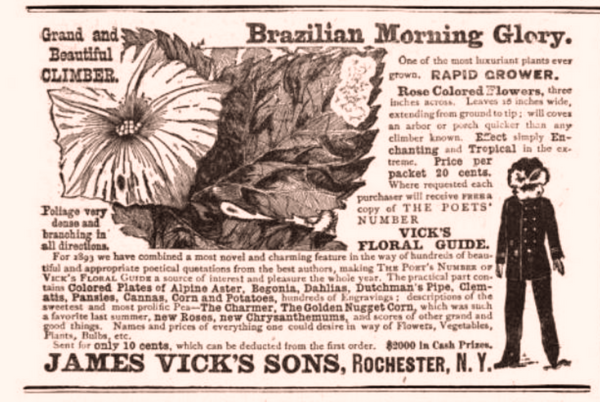
Here’s a little bit about James Vick and his illustrated floral guides:
Vick’s Floral Guide and Catalog, first produced in 1862, proved to be the perfect outlet for his expertise as a printer, writer, publisher and gardener. Filled with charming wood-cut engravings and vivid color plates (by some accounts, Vick was the first to use color illustrations in a U.S. seed catalog), the Floral Guide quickly became the most popular seed catalog of its day. “Vicks Floral Guide came like the first breath of spring, with promise of future bloom,” raves a typical magazine review. “Vicks catalog, like his seeds and plants, is first class. It is finely illustrated, on good paper, and with two beautiful colored plates.”
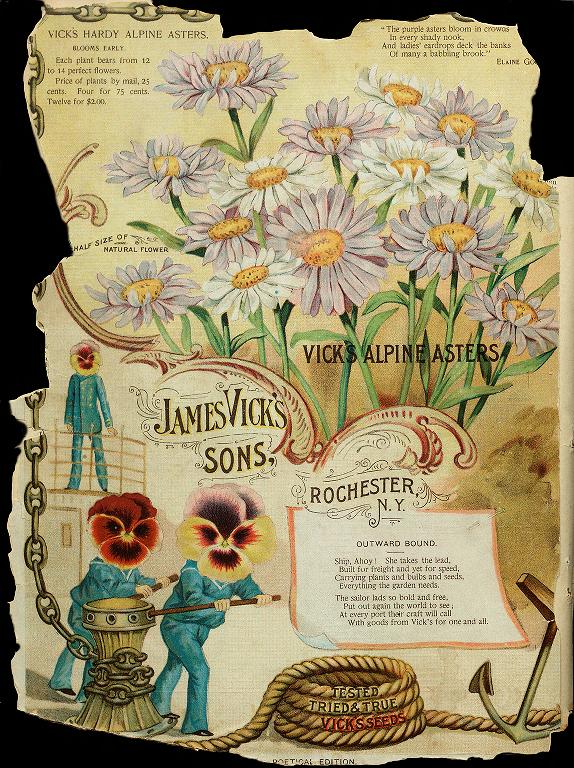
This particular illustration is mentioned in A Touch of Blossom: John Singer Sargent and the Queer Flora of Fin-de-siècle Art:
Inverts were also called, from at least the 1880s on, “pansies,” “buttercups,” “daisies,” “violets,” “blossoms,” and even more generally, “horticultural lads.” A Vick’s Seeds advertisement from the 1890s conflates the already queer figures of the pansy and the sailor into a suggestive hybrid. The back cover of a seed catalogue, the image depicts two flowery sailors, overseen by their captain, raising anchor. The anchor’s chain for the moment imprisons the blooming asters, but when the “sailor lads so bold and free / Put out again,” the poem at the bottom right assures us, dissemination will occur.

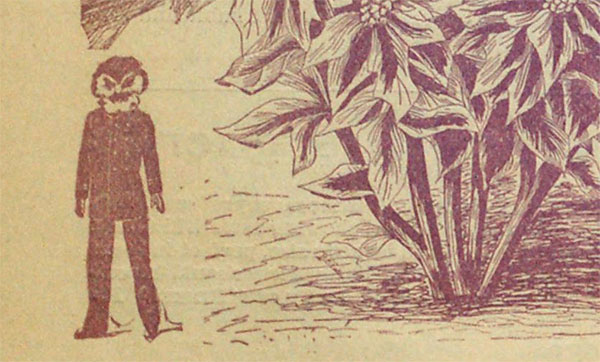
“A pansy is a loaded subject,” wrote John Ashbery in a 1997 retrospective of Joe Brainard’s work, then pointed out the “seed-packet look” of Brainard’s paintings and collages of pansies.

“The world keeps showing me these pictures.”
New pansies
These two were spotted in Cleveland. (See more: pansy luchadores)

